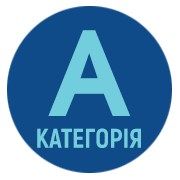THE IMPACT OF REHABILITATION MEASURES ON THE LIFE QUALITY OF PATIENTS WITH UNILATERAL NEGLECT
DOI:
https://doi.org/10.32782/2226-2008-2023-4-9Keywords:
unilateral neglect, hemineglect, stroke, rehabilitation, quality of lifeAbstract
Stroke remains a huge global health problem that is only growing worldwide. The agenda of the World Health Organization until 2030 recognizes the special importance of rehabilitation in the chain of high-quality medical care. Unilateral neglect is a disabling neurological deficit that often develops as a result of damage to the right hemisphere. The aim of study is to establish the impact of rehabilitation measures on the life quality of patients with hemineglect in the case of a right-hemisphere stroke. Materials and methods. Our study included 171 patients with right-hemispheric stroke who were treated at the medical and diagnostic department No. 1 of the private enterprise LORITOM. We observe very strong correlations with absolute values between 0.8 and 1 in almost all scores of physical aspects of health measured on different scales. This confirms that all measured components of physical health (for example, mobility, self-care ability, pain, etc.) are closely related to each other, and the improvement of one of them as a result of appropriate rehabilitation measures determines the corresponding improvement of the remaining components. On the other hand, very strong correlations between the values of integral summarizing indices and scales indicate a high agreement between them and their certain interchangeability in assessing the condition of patients. Results. Correlational analysis of physical and psychological state assessments obtained under various scales and indices was conducted to find out how rehabilitation measures affect clinical and neurological changes in cerebral infarction and their role in changes in life quality. We obtained very strong correlations of physical health indicators with assessments of such psychoemotional components as emotional wellbeing and vital activity (energy/fatigue) assessed via the SF-36 questionnaire. This allowed us to assume that these two aspects of mental health of the studied patients are most determined by their physical condition, the degree of disability, and the ability to self-care.
References
Murphy Stephen JX, David J. Werring. Stroke: causes and clinical features. Medicine. 2020; 48(9): 561-566. doi.org/10.1016/j.mpmed.2020.06.002.
Kuriakose Diji, Zhicheng Xiao. Pathophysiology and treatment of stroke: present status and future perspectives. International journal of molecular sciences. 2020; 21(20): 7609. doi.org/10.3390/ijms21207609
Norrving, Bo, et al. Action plan for stroke in Europe 2018–2030. European stroke journal. 2018; 3-4: 309-336. doi.org/10.1177/2396987318808
Stinear, Cathy M., et al. Advances and challenges in stroke rehabilitation. The Lancet Neurology. 2020; 19(4): 348-360. doi.org/10.1016/S0140-6736(20)31313-1
Vallar Giuseppe, Elena Calzolari. Unilateral spatial neglect after posterior parietal damage. Handbook of clinical neurology. 2018; 151: 287-312. doi.org/10.1016/B978-0-444-63622-5.00014-0
Dulo O. А., DidoY. M. Determination of the severity of the neglect as a prerequisite for designing a physical therapist intervention. Sports medicine, physical therapy and erghotherapy. 2019; 2: 72-76. doi.org/10.32652/spmed.2019.2.72-76






